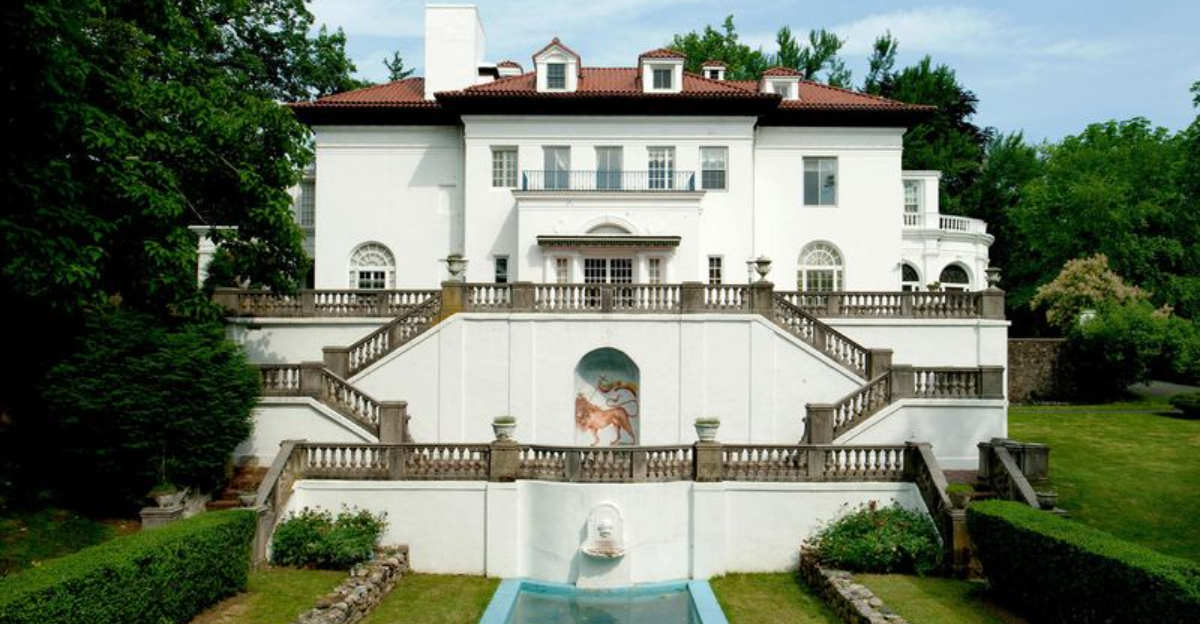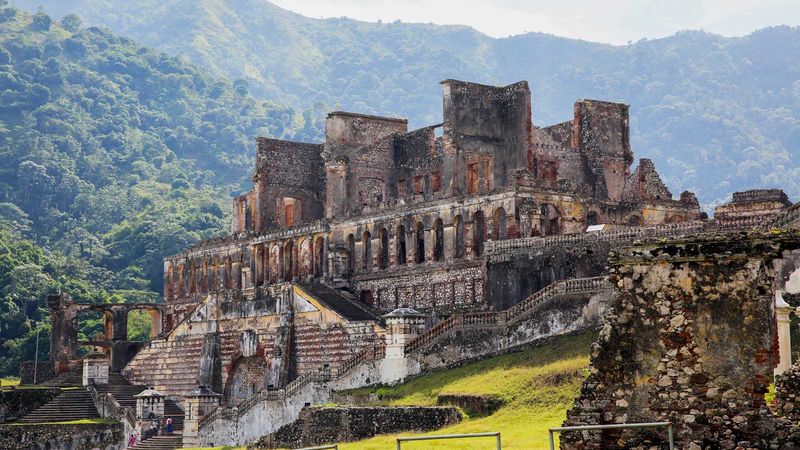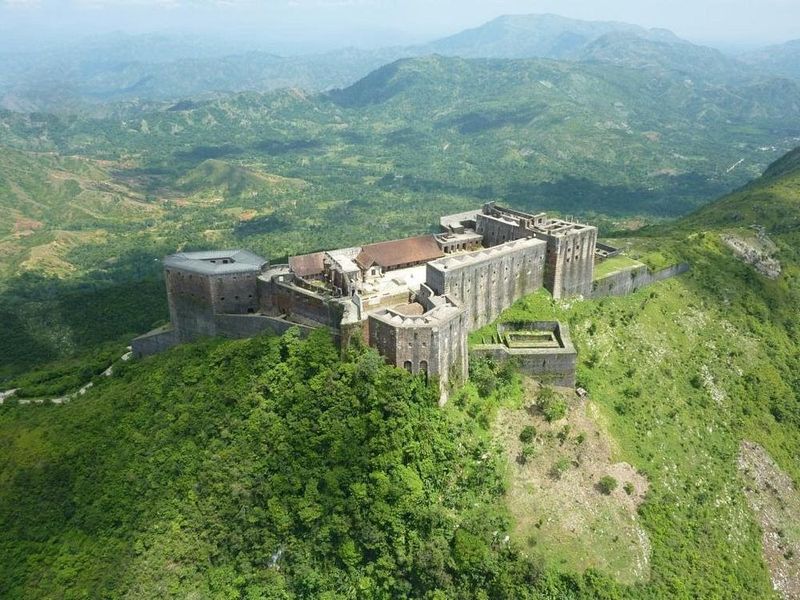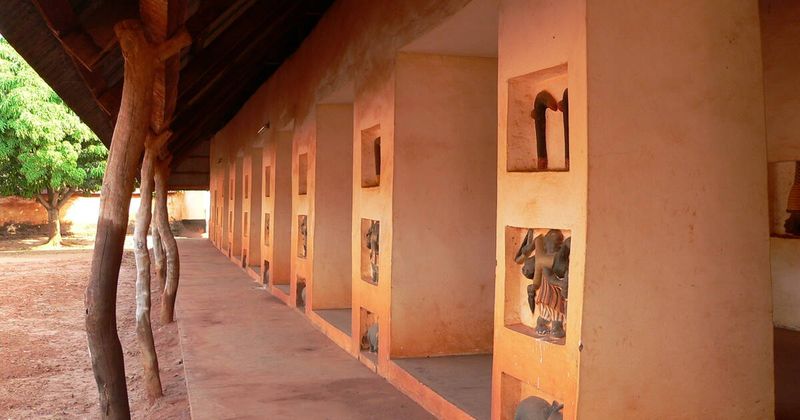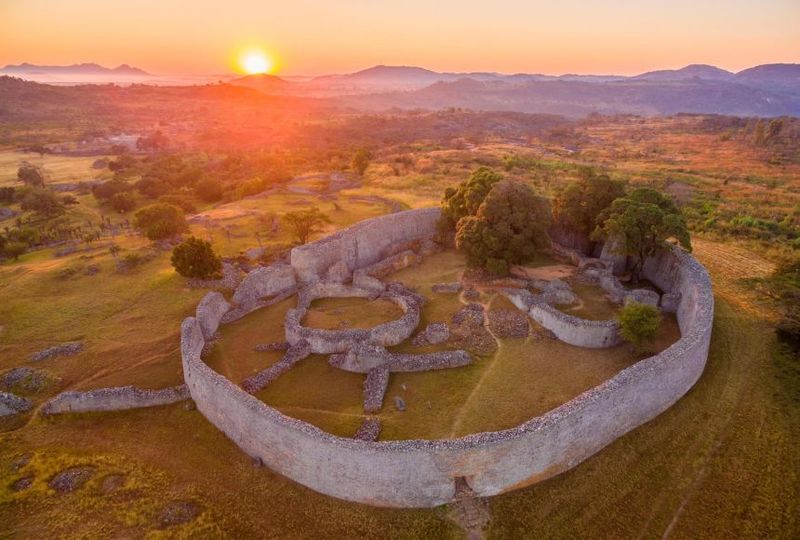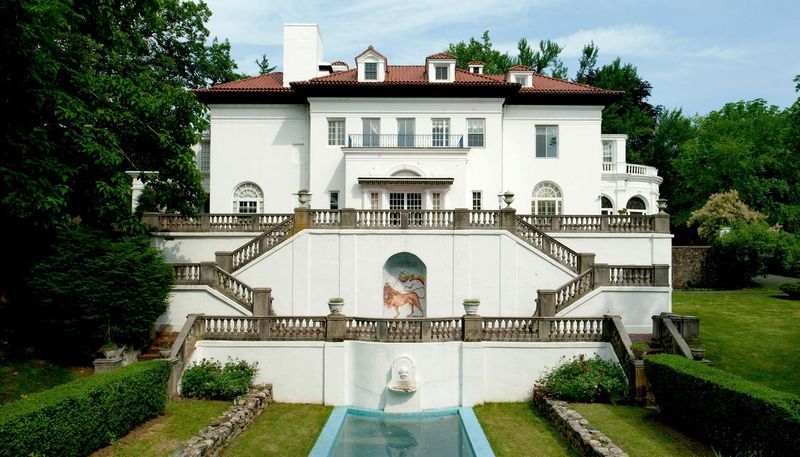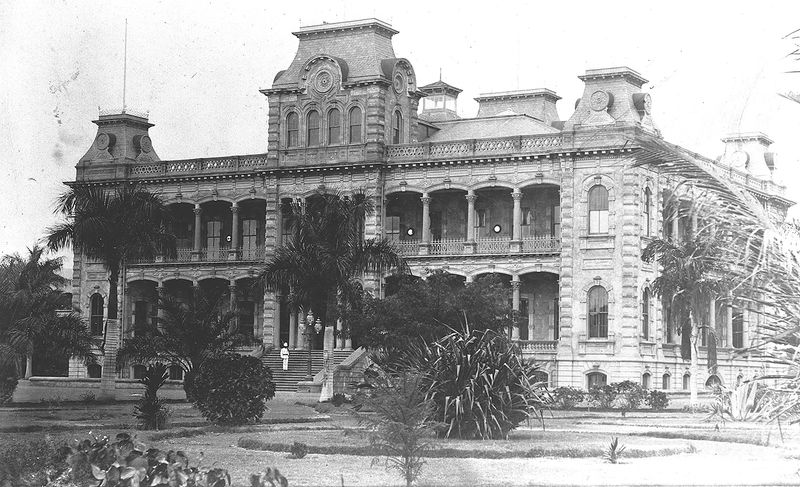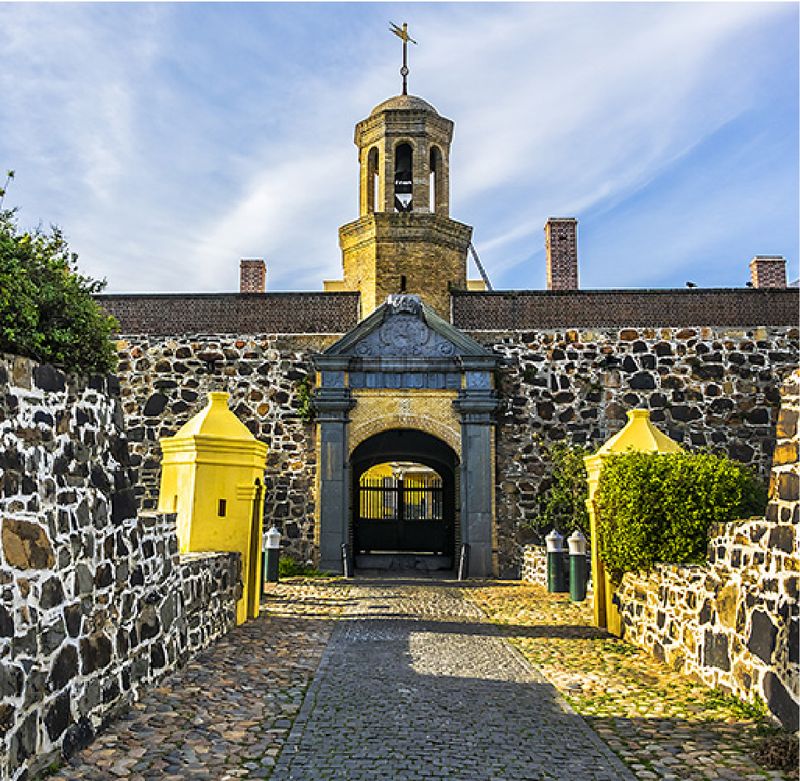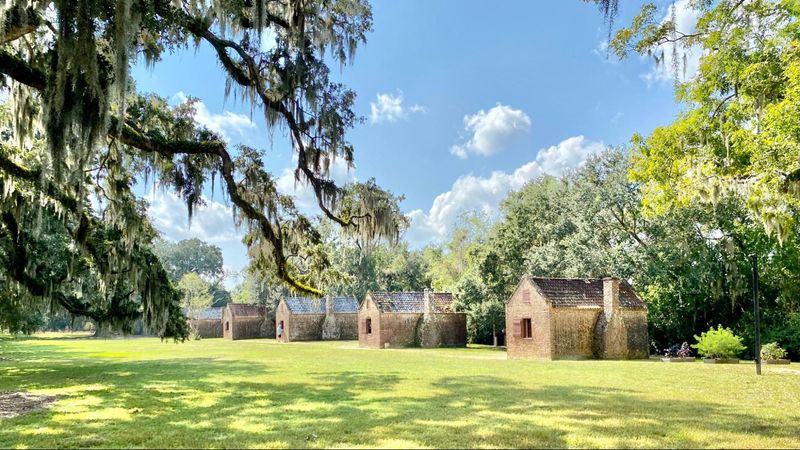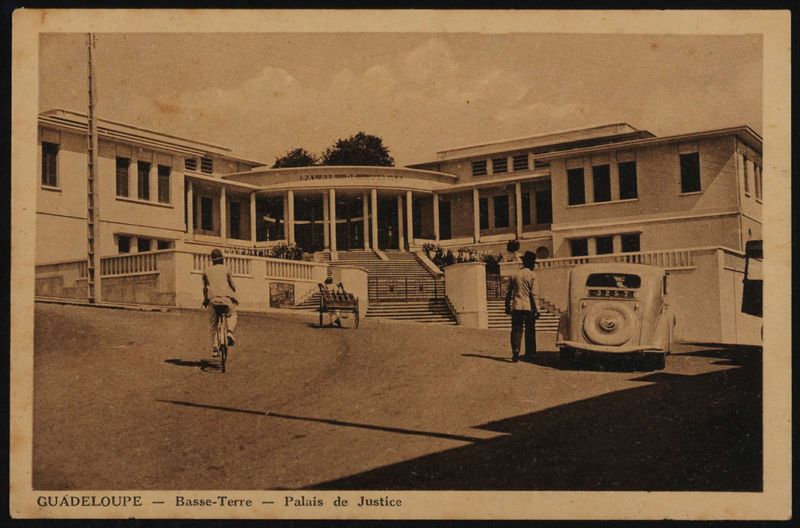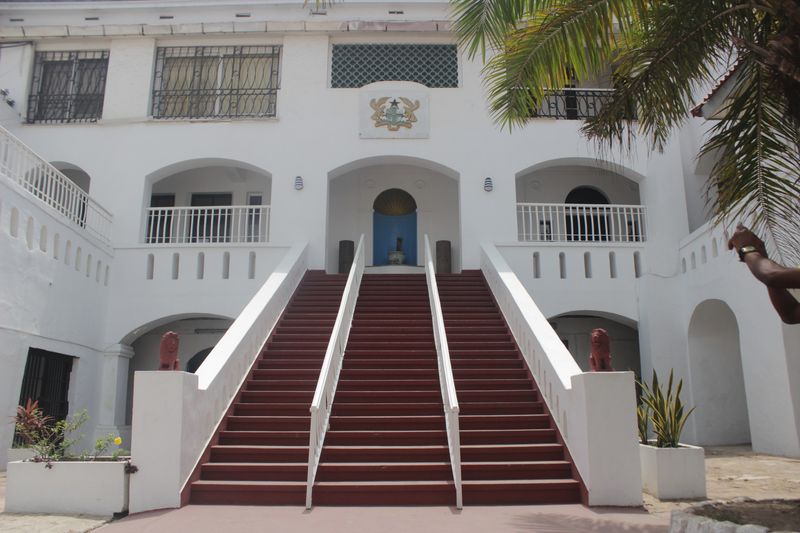Explore the stunning architectural achievements of Black architects throughout history. From grand palaces to formidable fortresses, these structures reflect the ingenuity, resilience, and artistic flair of their creators. With each building comes a story of cultural significance and historical impact, highlighting the rich tapestry of Black heritage in architecture. Discover how these magnificent structures symbolize power, resistance, and reclamation, leaving a lasting legacy for generations to admire.
1. San Souci Palace – Haiti (1813)
In the heart of Haiti lies the San Souci Palace, a baroque-inspired fortress constructed by King Henri Christophe. This architectural wonder stands as a symbol of Black power and resilience following Haiti’s independence. Although an earthquake in 1842 left it in ruins, the palace’s grandeur still whispers tales of its regal past. The majestic ruins are now a UNESCO World Heritage Site, offering a glimpse into the opulent history crafted by Haiti’s first Black king. Its historical significance and haunting beauty continue to attract visitors from around the globe, captivating them with its enduring legacy.
2. The Citadelle Laferrière – Haiti (1805–1820)
Towering above the Haitian landscape, The Citadelle Laferrière stands as the largest fortress in the Americas. Conceived by Henri Christophe and brought to life by enslaved African builders, this military marvel embodies the fusion of French and African architectural styles. Its strategic location atop a mountain served as a defensive bastion against potential French reinvasion, showcasing remarkable engineering prowess. With its imposing walls and breathtaking panoramic views, the Citadelle is a triumphant symbol of Haitian independence and ingenuity. Today, it remains a testament to the resilience and creativity of its creators, drawing awe and admiration.
3. The Abomey Royal Palaces – Benin (1600–1800s)
The Abomey Royal Palaces, nestled in Benin, are a testament to the architectural prowess of the Kingdom of Dahomey. Spanning from the 1600s to the 1800s, these mud-brick structures are adorned with unique bas-reliefs that tell stories of the past. Home to the fierce Dahomey warriors, including the Agojie, these 12 palaces are more than just architectural feats. They are a cultural treasure trove, offering insights into the rich heritage and traditions of their creators. Recognized as a UNESCO World Heritage Site, the palaces continue to captivate historians and tourists alike with their intricate beauty.
4. The Great Zimbabwe Ruins – Zimbabwe (11th–15th Century)
Amid the landscapes of Zimbabwe lie the Great Zimbabwe Ruins, a marvel of ancient engineering. Constructed by the Shona Kingdom between the 11th and 15th centuries, this stone city is renowned for its towering walls and intricate stonework, all achieved without the use of mortar. The site stands as a monument to pre-colonial Black ingenuity and craftsmanship, with its structures reflecting a sophisticated understanding of design and construction techniques. As one of Africa’s most significant archaeological sites, the ruins offer a glimpse into the lives of its builders, captivating visitors with its historical grandeur.
5. Villa Lewaro – New York (1918)
Perched gracefully amidst the verdant landscapes of Irvington, New York, Villa Lewaro stands as a testament to the pioneering spirit of Madame C.J. Walker and architect Vertner Tandy. This Beaux-Arts masterpiece, completed in 1918, celebrates Black excellence in architecture and entrepreneurship.
The mansion’s elegant design, with its grand columns and exquisite gardens, offers a glimpse into the opulence of the era. As you walk through its halls, you can almost hear the echoes of lively gatherings hosted by Walker herself, a self-made millionaire who inspired countless others.
Today, Villa Lewaro remains a symbol of empowerment, reminding us of the profound impact of Black architects in shaping cultural landscapes. A visit here is not just a step into history but a celebration of heritage and vision.
6. The Iolani Palace – Hawaii (1882)
Amidst the tropical beauty of Hawaii stands the Iolani Palace, a stunning example of American Florentine architecture. While not a traditional castle, its association with Betsey Stockton, a Black missionary and educator, highlights the influence of Black figures in early Hawaiian history. The palace served as a royal residence and later as the prison of Queen Liliʻuokalani, weaving a tapestry of cultural significance. Its elegant design and lush gardens make it a beloved landmark. Today, the Iolani Palace stands as a testament to the diverse cultural influences that have shaped Hawaii’s architectural heritage.
7. The Castle of Good Hope – South Africa (1666–1679)
In the heart of Cape Town, the Castle of Good Hope stands as the oldest surviving colonial building in South Africa. Constructed in the late 17th century by enslaved Black and Malay workers under Dutch rule, this fortress is a striking example of Dutch colonial architecture. Its angular bastions and historic charm provide a window into the past, reflecting the complex history of the region. As a symbol of resilience and endurance, the castle continues to attract visitors eager to explore its storied halls and learn about its origins. It remains a poignant reminder of the contributions of those who built it.
8. The Gullah-Geechee Castles of South Carolina (1800s)
Scattered along the South Carolina coast, the Gullah-Geechee Castles tell the story of cultural retention and resilience. Built by Gullah craftsmen, descendants of enslaved West Africans, these structures utilize oyster-shell concrete, known as tabby. Their fortified design reflects traditional African architecture, serving as a form of resistance and preservation. These homes stand as a testament to the enduring spirit of the Gullah people, showcasing their ability to adapt and thrive despite adversity. The Gullah-Geechee cultural corridor remains a vibrant testament to this unique heritage, drawing visitors to explore its history and celebrate its contributions to American culture.
9. The Palais des Gouverneurs – Guadeloupe (1700s)
In Guadeloupe, the Palais des Gouverneurs stands as a beacon of colonial history and Black craftsmanship. Constructed in the 1700s by enslaved African masons, this French colonial fortress is a testament to the labor and skill of its builders. Its grand design and strategic location offer insights into the colonial past and the complex dynamics of power and resistance. Today, the palais serves as a historic site, inviting visitors to reflect on the narratives of those who built it. Its enduring presence in the Caribbean landscape continues to inspire admiration and reflection on the contributions of Black architects.
10. The Osu Castle – Ghana (1650s, rebuilt by Black leaders)
Perched along the coast of Ghana, the Osu Castle offers a compelling narrative of transformation and reclamation. Initially constructed in the 1650s by Danish colonizers, it later became a symbol of Black empowerment under leaders like Kwame Nkrumah. Transformed from a slave-trading fort to a presidential palace, the castle stands as a powerful reminder of Ghana’s journey to independence. Its architecture reflects a blend of European and African influences, encapsulating the complex history of the region. Osu Castle remains a poignant emblem of resilience, drawing visitors to explore its storied past and the legacy of its transformation.
